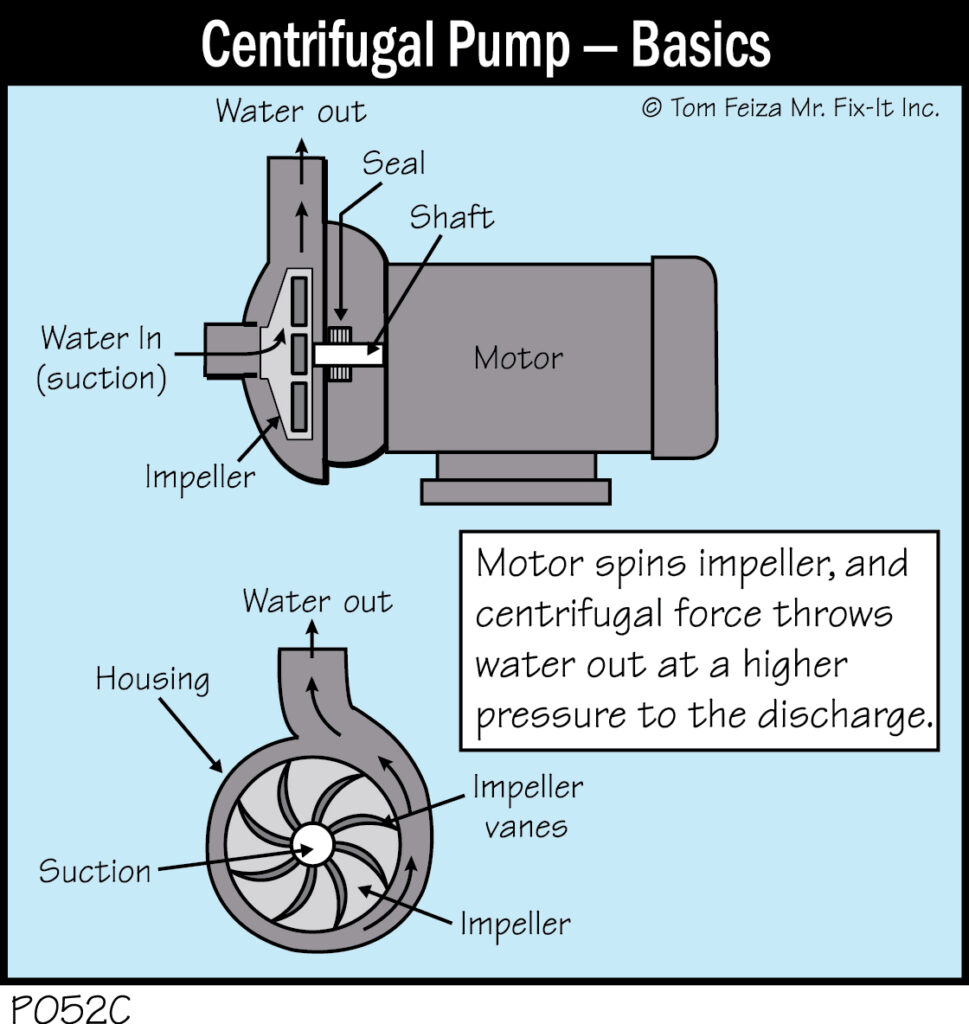Yes, there are several centrifugal pumps in your home and your car. Let’s see – your home may have a sump pump, well pump, hydronic heating pump, sewer ejector pump, hot water circulating pump, aquarium pump, fountain pump, and the list goes on and on. Your car has a coolant water pump, fuel pump, and window washer pump. Centrifugal pumps are among the most common and dependable mechanical systems in the world.
How do they work? Big or small, they all work with the same principles. Most residential pumps are driven or rotated by an electric motor. In commercial applications, the pump may be operated by a turbine or gas engine.
The basis of the pump is an impeller that spins inside a housing with small clearances. Liquid is drawn into the center of the impeller as it rotates, and then centrifugal force throws the liquid to the outside of the impeller. Since the impeller is larger in diameter toward the outside, the higher velocity (surface speed) increases the movement of the fluid as it moves toward the outside. It is a continuous process, drawing fluid in and pushing it out into a specially shaped involute housing and to the piping.


